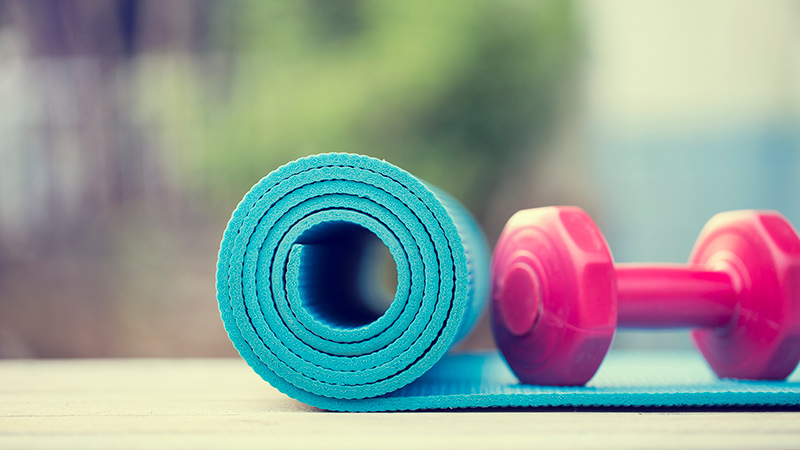
Are you looking to increase your running stamina and improve your pace? Look no further! In this article, we will provide you with 10 essential steps to boost your running stamina and maximize your performance.
Whether you're a beginner or a seasoned runner, these tips will help you reach new heights in your training. From proper hydration to interval training, we've got you covered.
Get ready to take your running to the next level and achieve your goals.
Start With Short Distances
To build up your running stamina, begin by gradually increasing your distance with shorter runs. This gradual progression is essential for avoiding injuries and allowing your body to adapt to the demands of running.
Start by incorporating short bursts of running into your regular routine. For example, if you typically run for 20 minutes, try adding a few minutes of running at a higher intensity. Over time, you can gradually increase the duration of these bursts, as well as the overall distance of your runs.
This approach allows your body to gradually adapt to the increased demands of running, helping you to build endurance and stamina. Remember, consistency is key, so aim to incorporate these short bursts of running into your routine regularly to see the best results.
Gradually Increase Distance
One of the key strategies to maximize running stamina is to gradually increase distance. Slowly upping mileage allows your body to adapt and build endurance over time.

Slowly Upping Mileage
Gradually increasing your running distance to improve stamina by adding a predetermined amount of mileage each week is a key strategy to build endurance and boost your running performance. Here are four reasons why increasing your running distance gradually can have a powerful impact on your running journey:
- Progression: Gradually increasing your mileage allows your body to adapt and build endurance over time, reducing the risk of injuries.
- Mental resilience: Pushing past previous limits and achieving new distance milestones can enhance your mental strength and confidence.
- Physical adaptations: Consistently increasing your mileage stimulates physiological changes in your body, improving your cardiovascular fitness and oxygen efficiency.
- Sense of accomplishment: Each time you increase your distance, you'll experience a sense of achievement and satisfaction, motivating you to continue challenging yourself.
Incrementally Building Endurance
Building endurance through gradually increasing distance is a crucial component of maximizing running stamina. To build endurance effectively, it is important to take an incremental progress approach and adopt a slow and steady mindset. This means gradually increasing your running distance over time, allowing your body to adapt and grow stronger. By following this approach, you will not only improve your stamina but also reduce the risk of injury.
Start by adding a small amount of distance to your runs each week. For example, if you currently run three miles, aim to add an extra half-mile the following week. This gradual increase allows your body to adjust and adapt without overwhelming it. As you continue to build endurance, you will notice that your stamina improves, and you can run longer distances with ease.
Progressive Distance Increments
To effectively increase running stamina, it is important to incorporate progressive distance increments into your training regimen. Gradually increasing the distance of your runs helps your body adapt and build endurance over time.
Here are four reasons why progressive training and gradual improvement are essential for maximizing your running stamina:
- Prevents injury: By gradually increasing your distance, you allow your muscles, joints, and connective tissues to adapt and become stronger, reducing the risk of injury.
- Builds mental resilience: Pushing your limits and accomplishing small distance milestones helps you develop mental toughness and the belief that you can conquer any challenge.
- Boosts confidence: As you consistently increase your distance, you'll gain a sense of accomplishment and confidence in your abilities, motivating you to push even further.
- Enhances overall fitness: Gradually increasing your distance not only improves your running stamina but also increases your cardiovascular fitness, strengthens your muscles, and improves your overall health and well-being.
Include Interval Training
Interval training is a crucial component in enhancing running stamina and performance. Incorporating interval training into your running routine can provide numerous benefits and help you achieve your running goals more effectively. One of the main benefits of interval training is that it helps to improve cardiovascular fitness by challenging your heart and lungs to work harder during intense bursts of exercise. This increased cardiovascular capacity translates into improved running endurance and stamina.
Additionally, interval training helps to increase your speed and running efficiency by pushing your body to work at higher intensities. By alternating between periods of intense effort and active recovery, you can train your body to sustain a faster pace for longer periods.

To get the most out of interval training, it is important to design effective interval workouts that include a proper warm-up, structured intervals, and a cool-down. By incorporating interval training into your running routine, you can take your running stamina and performance to new heights.
Practice Good Form
As you continue to enhance your running stamina and performance, it is essential to prioritize practicing good form to maximize your running potential. By focusing on your running form, you can improve your efficiency, prevent injuries, and ultimately achieve greater freedom in your running experience.
Here are four key elements to consider when practicing good form:
- Wear the right shoes: Invest in a pair of good running shoes that provide proper support and cushioning. This will enhance your comfort and reduce the risk of foot and leg injuries.
- Breathe properly: Pay attention to your breathing technique while running. Take deep breaths in through your nose and exhale through your mouth. This will provide your muscles with the oxygen they need, helping you maintain your pace and endurance.
- Maintain a neutral posture: Keep your head up, shoulders relaxed, and core engaged. This alignment will improve your running efficiency and prevent unnecessary strain on your body.
- Focus on your stride: Strive for a midfoot strike, as landing on your heel can lead to injuries. Aim for a quick turnover with shorter strides, allowing your body to move more efficiently.
Stay Hydrated
Staying hydrated is crucial for maximizing running stamina. Proper hydration can enhance endurance and help prevent fatigue and cramps during long-distance runs.
To stay hydrated as a runner, it's important to drink enough water before, during, and after your workouts, and consider electrolyte replenishment for extended periods of exercise.
Importance of Hydration
Regularly replenishing your body with fluids is vital for maintaining optimal running stamina. Hydration plays a crucial role in supporting your overall performance and ensuring that your body functions at its best. Here are some key points to emphasize the importance of staying hydrated:
- Hydration helps maintain electrolyte balance, which is essential for proper muscle function and nerve communication.
- Dehydration can lead to fatigue, muscle cramps, and decreased endurance.
- Thirst is not always an accurate indicator of hydration levels, so it's important to drink fluids regularly throughout your run.
- Proper hydration improves blood circulation, which enhances oxygen and nutrient delivery to your muscles, helping you perform better and prevent injuries.
Hydration for Endurance
Maintaining proper hydration is essential for maximizing endurance during long-distance running. Hydration techniques play a crucial role in ensuring optimal performance and preventing fatigue, cramps, and dehydration-related issues. Staying hydrated provides numerous benefits that can enhance your running experience.

Firstly, it helps regulate body temperature, enabling you to withstand longer training sessions and races. Additionally, staying hydrated aids in the delivery of oxygen and nutrients to your muscles, boosting their performance and reducing the risk of injury. It also improves your mental focus and concentration, allowing you to maintain a steady pace and push through challenging moments.
To stay hydrated, make sure to drink water before, during, and after your runs. Carry a water bottle or plan your routes near water sources to ensure easy access. Remember, staying hydrated is a simple yet effective way to improve your endurance and enjoy the freedom of long-distance running.
Hydration Tips for Runners
To optimize hydration during your runs, it is crucial to incorporate a consistent and strategic approach. Staying hydrated during exercise is essential for maintaining performance and preventing dehydration.
Here are some hydration techniques to help you stay hydrated and perform at your best:
- Drink water before, during, and after your run to replenish fluids and maintain hydration levels.
- Use electrolyte-rich sports drinks to replace essential minerals lost through sweat.
- Consider carrying a hydration pack or belt to have easy access to fluids during your run.
- Monitor your urine color to gauge your hydration status. Pale yellow urine indicates proper hydration, while dark yellow urine suggests dehydration.
Eat a Balanced Diet
A balanced diet plays a crucial role in maximizing a runner's stamina. Fueling your body with the right nutrients is essential for optimal performance and endurance.
To achieve balanced nutrition, it is important to incorporate a variety of food groups into your diet. Focus on consuming lean proteins, whole grains, fruits, vegetables, and healthy fats. These foods provide the necessary energy, vitamins, and minerals that support muscle function and recovery.
Additionally, fueling strategies such as eating small, frequent meals throughout the day and consuming carbohydrates before and after workouts can enhance your running stamina.

Rest and Recover Adequately
Rest and adequate recovery are essential for maximizing a runner's stamina and allowing their body to repair and rebuild after intense training sessions. To truly boost your running performance, it is crucial to prioritize rest and recovery.
Here are some key factors to consider:
- Proper Sleep: Getting enough sleep is vital for both physical and mental recovery. Aim for 7-9 hours of quality sleep each night to allow your body to repair and rejuvenate.
- Active Recovery: Engage in low-intensity activities such as yoga, stretching, or light walking to promote blood flow, reduce muscle soreness, and enhance recovery.
- Rest Days: Schedule regular rest days throughout your training week. These days are essential for your body to adapt and grow stronger, reducing the risk of overtraining and injuries.
- Listen to Your Body: Pay attention to any signs of fatigue or excessive muscle soreness. If needed, adjust your training schedule or intensity to allow for proper rest and recovery.
Cross Train Regularly
Regular cross training is a crucial component in maximizing running stamina and enhancing overall athletic performance. Incorporating cross training into your routine not only helps prevent injury and burnout but also improves your running efficiency and endurance.
Cross training benefits runners by targeting different muscle groups, increasing cardiovascular fitness, and promoting overall strength and flexibility. Effective cross training exercises for runners include activities such as cycling, swimming, strength training, yoga, and Pilates. Cycling helps build leg strength and endurance while swimming provides a low-impact full-body workout. Strength training improves muscle strength and power, which translates to improved running economy. Yoga and Pilates enhance flexibility, balance, and core stability, leading to better running form and reduced risk of injury.
Listen to Your Body
It is essential to attentively listen to your body while training for maximum running stamina. Body awareness plays a crucial role in improving your running performance and preventing injuries. By paying close attention to the signals your body is sending, you can make adjustments to your training routine and optimize your running experience.
Here are some listening cues to help you tune in to your body:
- Pain or discomfort: Recognize when your body is experiencing pain or discomfort and take appropriate action to avoid further injury.
- Fatigue levels: Monitor your energy levels and adjust your training intensity and volume accordingly.
- Breathing: Pay attention to your breathing patterns to ensure you are maintaining a steady and efficient rhythm.
- Muscle soreness: Be aware of any muscle soreness or tightness, and incorporate proper recovery techniques such as stretching or foam rolling.
Listening to your body is empowering. It allows you the freedom to make informed decisions, adapt your training, and ultimately improve your running stamina and overall performance.

Stay Consistent With Training
To maximize running stamina and improve your pace, it is crucial to stay consistent with your training.
This involves establishing a training routine that works for you, building endurance through consistent practice, and maintaining a regular workout schedule.
Establishing a Training Routine
Consistency in training is essential for establishing a strong and effective routine to maximize running stamina. To maintain consistency and ensure a successful training schedule, consider the following:
- Set realistic goals: Break down your ultimate goal into smaller, achievable milestones. This will keep you motivated and give you a sense of accomplishment.
- Create a schedule: Plan your workouts in advance and stick to a regular routine. This will help you stay accountable and make training a priority.
- Mix up your workouts: Vary your training routine to prevent boredom and keep your body challenged. Incorporate different types of runs, such as intervals, tempo runs, and long runs.
- Find a support system: Surround yourself with like-minded individuals who share your passion for running. Join a running group or find a running buddy who can provide encouragement and accountability.
Building Endurance Through Practice
Maintaining a regular training schedule is vital for developing endurance and maximizing running stamina. Building stamina and improving endurance require consistent practice and dedication. By staying consistent with your training, you allow your body to adapt and become more efficient at utilizing oxygen, ultimately increasing your endurance capacity.
To build stamina, it is important to gradually increase the intensity and duration of your runs over time. Incorporating interval training and hill workouts can also help to challenge your cardiovascular system and build endurance. Additionally, cross-training activities such as cycling or swimming can provide a break from running while still improving overall endurance.
Remember to listen to your body and give yourself adequate rest and recovery days. Pushing too hard without proper rest can lead to fatigue and injury, hindering your progress. Stay motivated by setting realistic goals and celebrating each milestone along the way.
With consistent training and a positive mindset, you will gradually build endurance and achieve your running goals.

Maintaining Regular Workout Schedule
Continuing with a consistent training schedule is essential for maximizing running stamina and achieving your goals. Establishing consistency in your workouts allows your body to adapt and improve over time. However, it is important to strike a balance and avoid overtraining, as this can lead to injury and burnout.
To maintain a regular workout schedule and stay consistent with training, consider these four key factors:
- Set realistic goals: Define what you want to achieve and break it down into smaller, manageable steps.
- Create a schedule: Plan your workouts in advance, making sure to include rest days and cross-training activities.
- Stay motivated: Find ways to stay inspired, whether it's through music, connecting with a running group, or setting rewards for yourself.
- Listen to your body: Pay attention to any signs of fatigue or pain and adjust your training accordingly.
Frequently Asked Questions
How Often Should I Cross Train During My Running Training?
Cross training frequency during running training depends on individual goals and fitness levels. Incorporating cross training sessions, such as swimming or cycling, can provide numerous benefits such as improved cardiovascular endurance, increased muscle strength, and reduced risk of injury.
What Are Some Common Signs of Overtraining and How Can I Avoid It?
Common signs of overtraining include persistent fatigue, decreased performance, increased injuries, and mood changes. To avoid overtraining, listen to your body, incorporate rest days, vary your training intensity, and maintain a balanced diet.
Is It Necessary to Incorporate Strength Training Into My Running Routine?
Incorporating strength training into a running routine offers numerous benefits for runners. Weightlifting improves running form, increases muscle strength, and reduces the risk of injury. The best cross-training exercises for runners include squats, lunges, and plyometrics.
Should I Be Concerned About Stretching Before or After My Runs?
Stretching techniques and warm-up exercises are essential components of a running routine. Prioritizing pre-and post-run stretching can help prevent injuries and improve overall performance. Incorporating these practices can enhance your running experience and boost your stamina.
Are There Any Specific Nutritional Guidelines I Should Follow to Maximize My Running Stamina?
To maximize running stamina, it is important to follow specific nutritional guidelines. Pre-run fueling is crucial for optimal performance. Incorporating proper nutrition, such as consuming carbohydrates, electrolytes, and protein, can help boost endurance and support overall running performance.







